With the 2020 Major League Soccer season finally underway, matchday two saw Los Angeles Football Club go head-to-head with Philadelphia Union. With LAFC finishing as champions of the 2019 Western Conference and Union finishing third place in the Eastern Conference, this match was set to be a thriller. A packed crowd of 22,000 attended the match in The Banc of California Stadium with the match ultimately ending in a 3-3 classic.
As we begin to dissect the game in this tactical analysis, we’ll look at the team shapes and tactics that each team employed. This tactical analysis will also look at what eventually became an incredibly interesting game of cat and mouse in wide areas.
Lineups
Both teams entered the game relatively unchanged from their MLS opener the week prior. With only two changes to the starting lineup, Bob Bradley’s LAFC team stepped out onto the pitch in an expected 4-3-3 formation. Jim Curtin’s Philadelphia Union also held the same shape from their previous fixture against FC Dallas, a 4-3-1-2 which was essentially a variation of a 4-4-2 with a diamond in midfield.
What’s immediately interesting to consider is how the two shapes will look once they’re integrated within one another. Union hold an advantage in midfield as they outnumber LAFC 4-3 in the centre of the pitch. LAFC hold the advantage in the channels as they’re able to create 2v1 overloads against Union’s isolated full-backs. There are strengths and weaknesses in both formations. The tactics employed within each system and players ability to solve the inevitable problems they will face may have been the difference in which team would ultimately triumph.
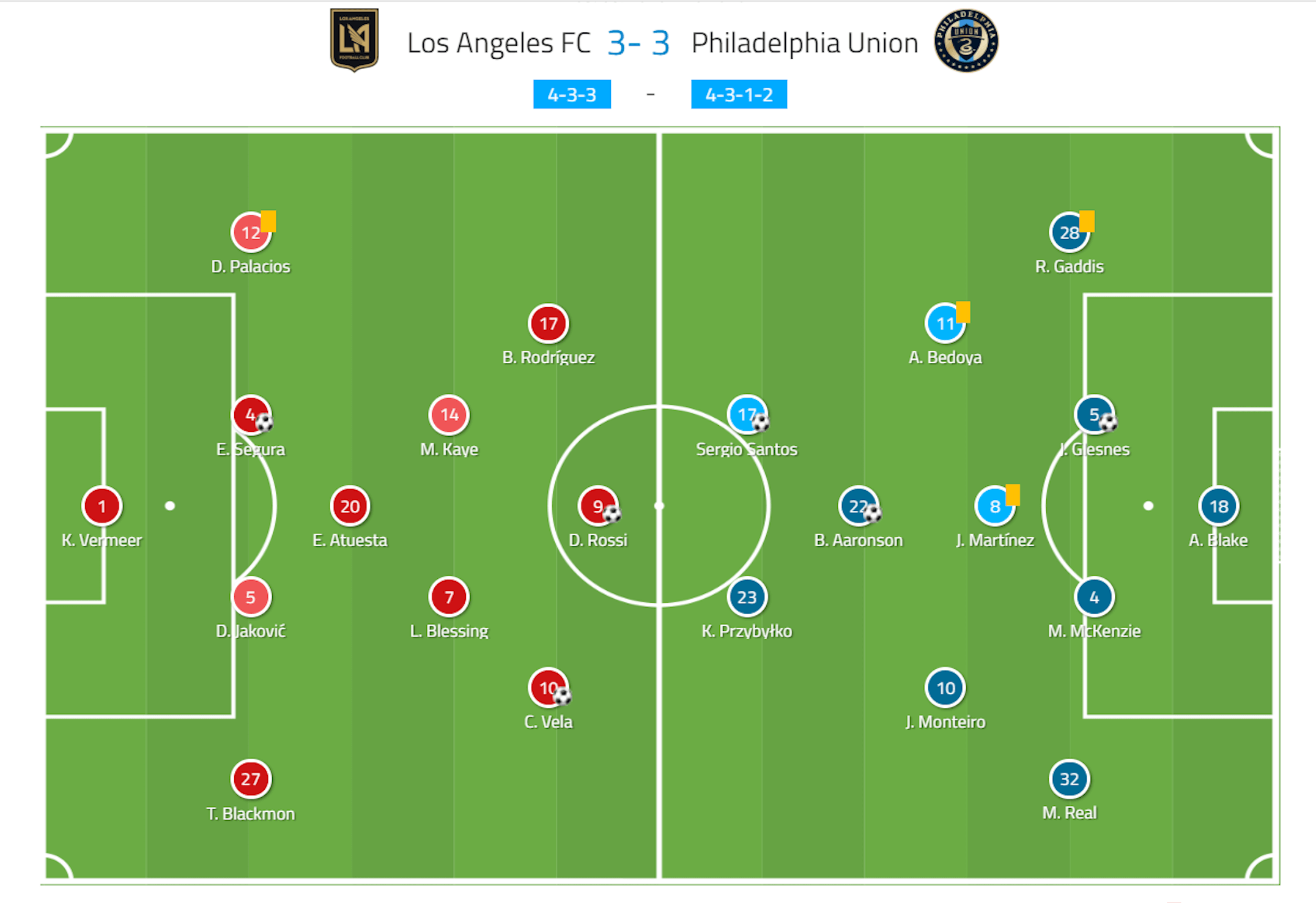
What the stats say
The xG dynamics chart of this match show that LAFC were ultimately able to create more, and higher-quality chances to score goals. The statistics below would imply that the Union were lucky to come away with three goals and shared points in the game. However, while two stunning goals from distance may have helped the Union in the match, they were a tougher nut to crack than the statistics may show.
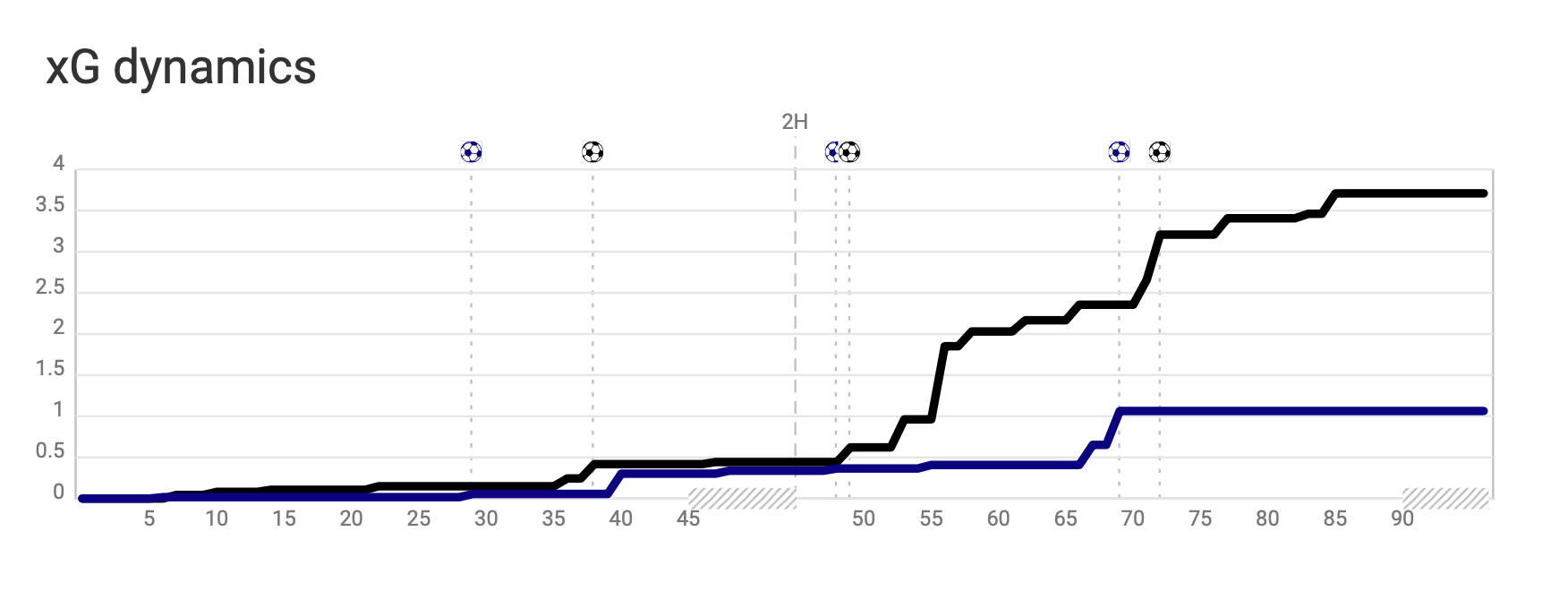
The PPDA chart below helps to tell a slightly different story than that of the xG chart above. For the best part of 60 minutes of the game, Philadelphia Union were incredibly tough to break down. With the first-half average of 6.6 passes per defensive action, Union were dominant without the ball. Tactical organization in the defensive phase of the game, as well as quick reactions and aggressive defending in transition, meant LAFC had some serious challenges breaking down and creating high-quality chances in the game. During the first half, although LAFC racked up a total of nine shots, the highest xG value was 0.17, with all others being below 0.10. This means that although Union conceded shots, the likelihood of conceding was incredibly low.
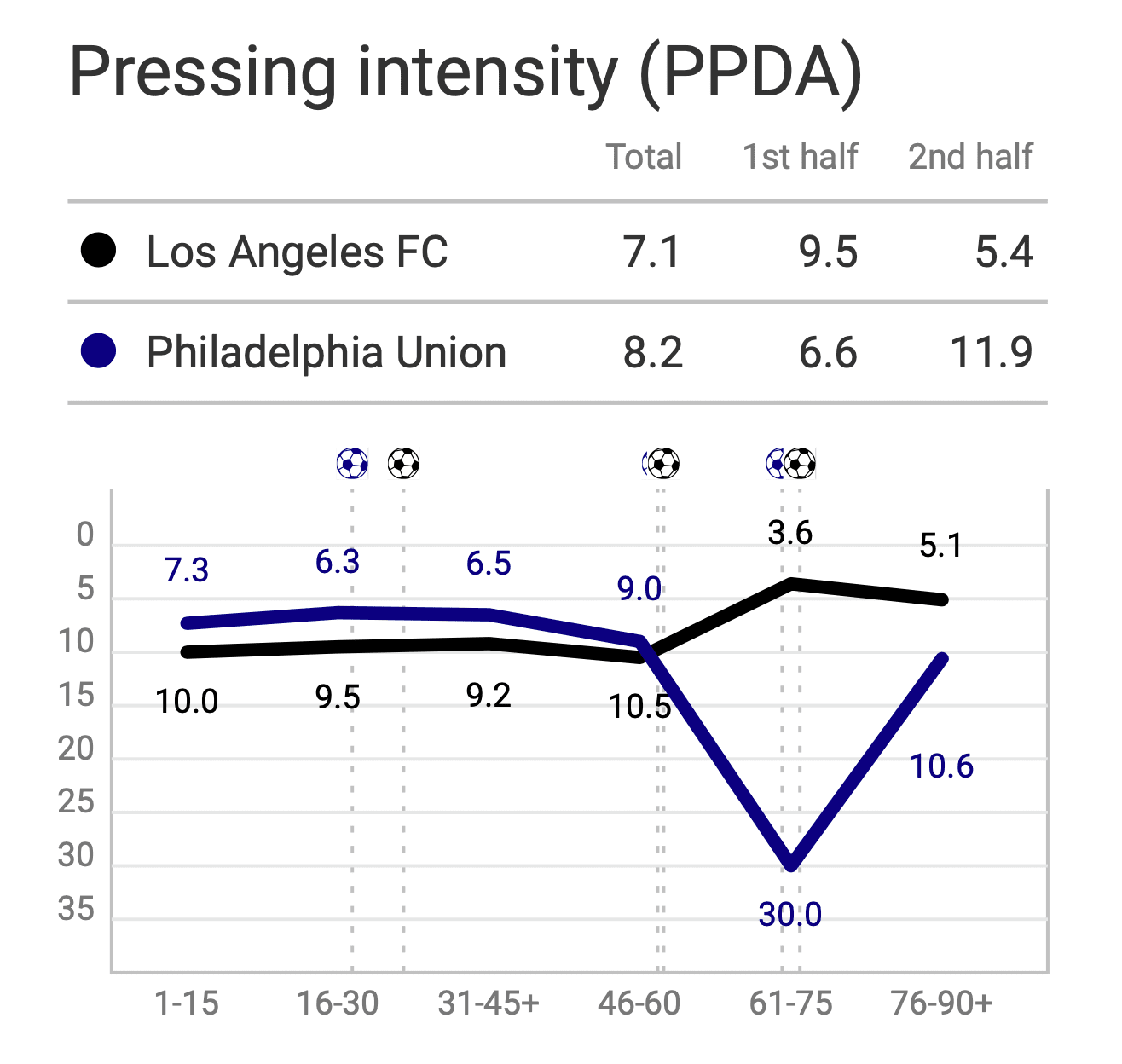
Union’s Defensive Organization
As Union played with a variation of a 4-4-2 diamond, the shape allows for an interesting battle in the opposition’s build-out phase. As LAFC’s tactics under Bob Bradley in 2019 were heavily focused around maintaining possession of the ball, building out from the back became the foundation for everything else to build off. Between the goalkeeper, centre-backs and defensive midfielder, LAFC often build-out in a diamond which allows them to create numerical advantages when starting an attack. With two centre-forwards and an attacking midfielder close behind, Union’s shape and tactics made it difficult for LAFC to build out and in particular, difficult to play into central midfielders.
The below images firstly show Union’s defensive organization when the ball is in central areas. The two forwards, Sergio Santos and Kacper Przybyłko set the line of confrontation in a mid-block while Brenden Aaronson supports behind and prevents LAFC from being able to easily progress the ball through the front line. With a narrow midfield diamond supporting behind the front two, LAFC were naturally channelled into playing wide which is where Union could set traps.
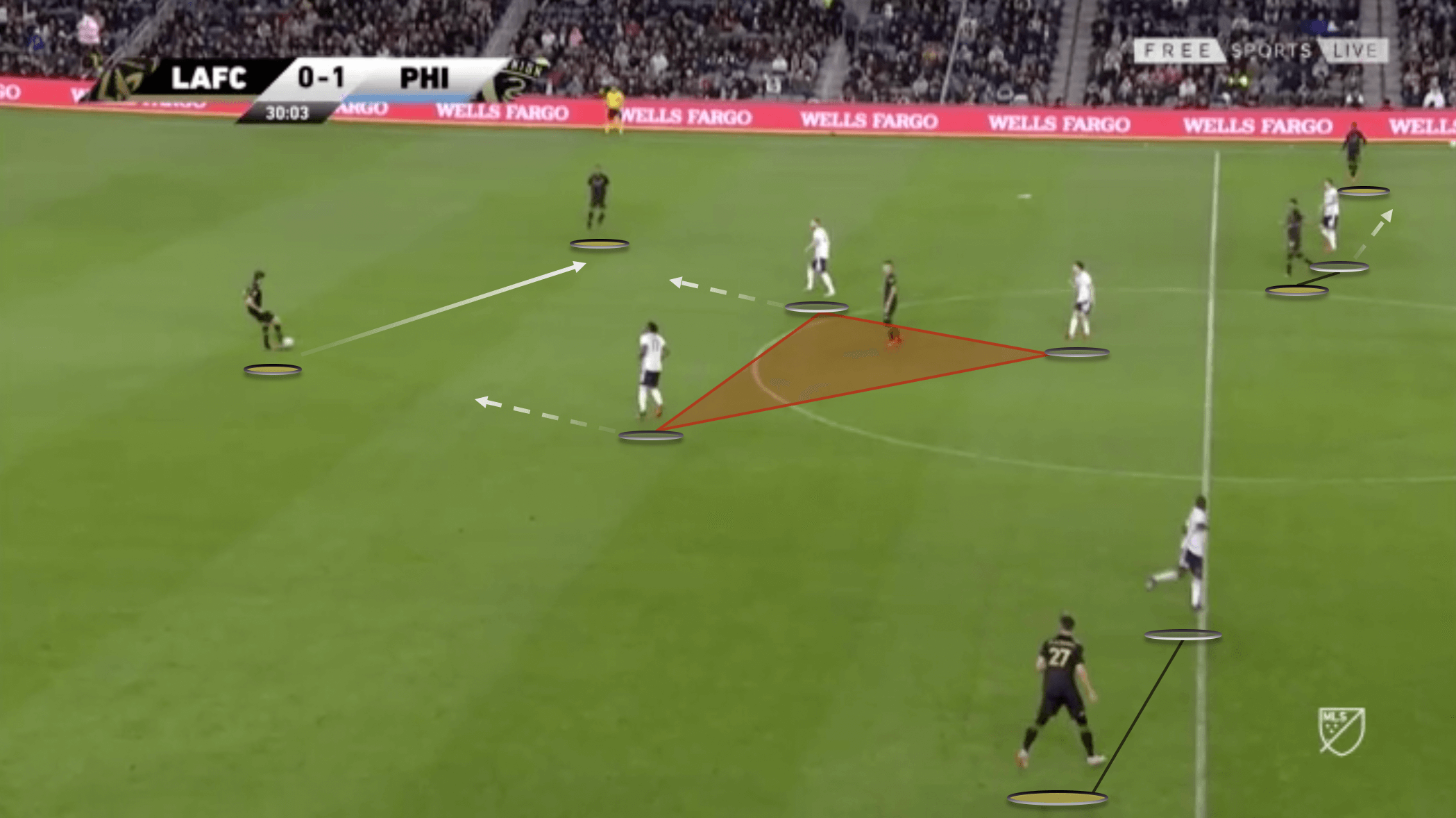
As LAFC look to progress the ball into wide areas (which initially look favourable for the home team), Union shift quickly and look to suffocate the full-back. The nearest centre-forward, in this case, Przybyłko, screens the pass back into the nearest centre-back. As the second centre-forward, Santos releases from the furthest centre-back from the ball and tracks Eduard Atuesta who is operating as a number six. This allows the top and nearest side of the diamond, being Aaronson and Alejandro Bedoya, to close down the full-back and nearest supporting midfielder. With this approach, Union time and time again reduced space and options for the full-backs to play in. At times, LAFC were crafty enough to work through the trap, but overall, Union made life incredibly difficult for LAFC in the build-out phase.
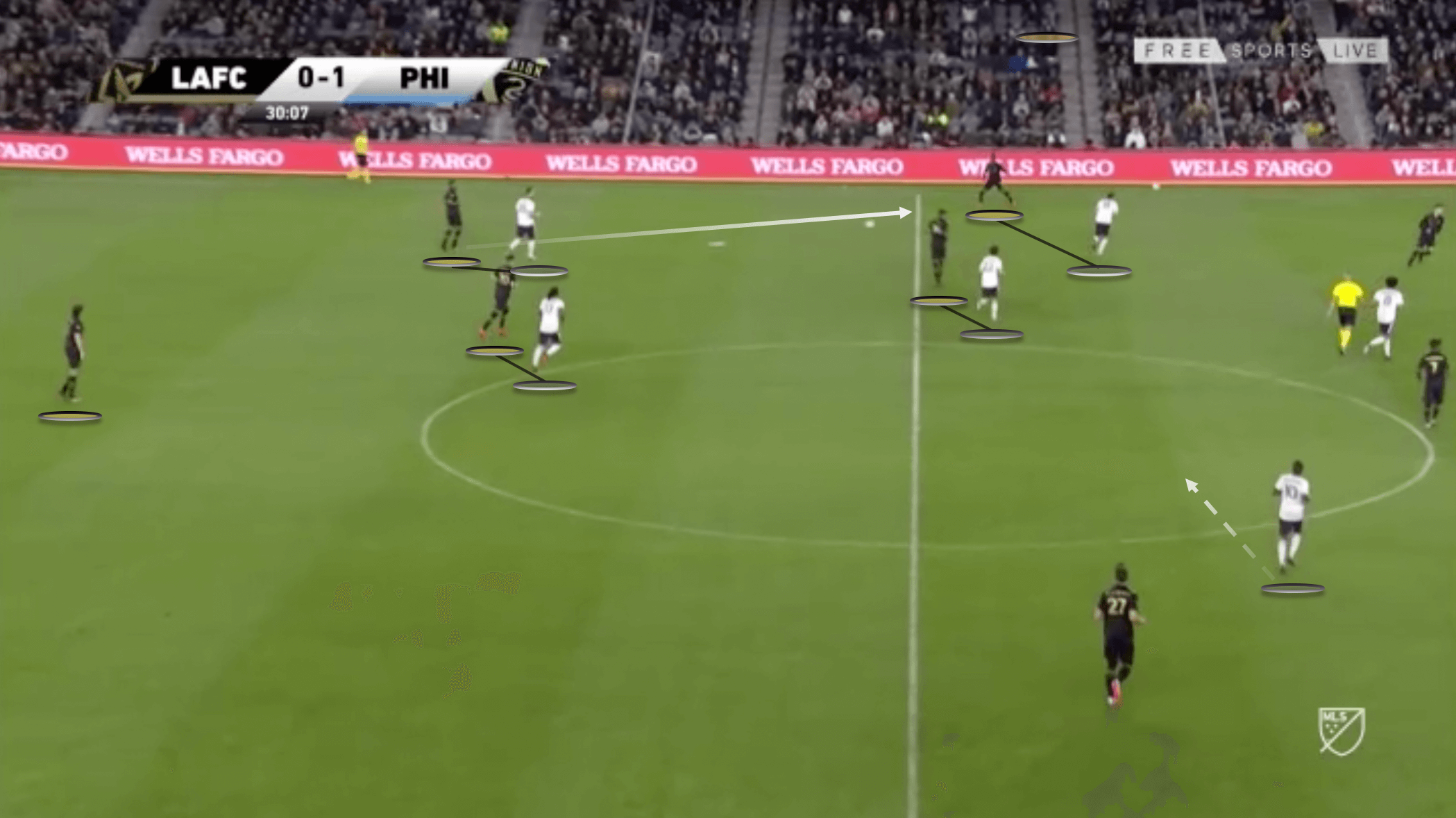
This time from a throw-in, notice how compact Union are from the front two and into the midfield diamond. On many occasions in the game, Union played so compact that spectators must have been screaming for LAFC to switch the play. The challenge for LAFC is having the space and time to do so.
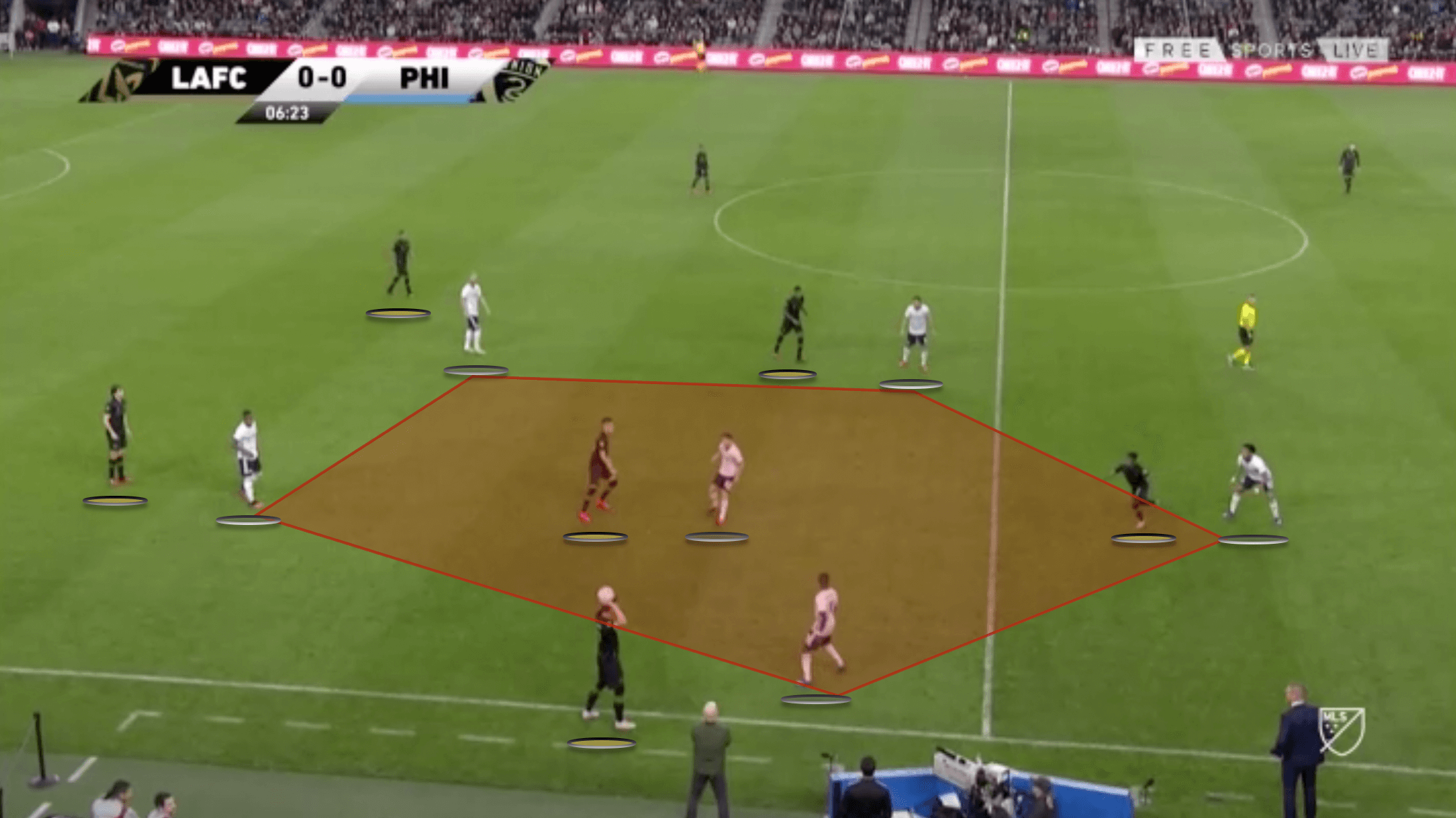
The tactics that Union employed in possession were often to play direct and as often as possible, attack the opponent before they were able to regain organization and balance.
The image below shows Union with a free-kick in a dangerous area. Notice how many LAFC players are pointing, or looking in different directions in order to help the team get organized. While most clubs would focus on setting up a set-piece routine, Union looks to get the ball rolling quickly in order to exploit an unbalanced LAFC.
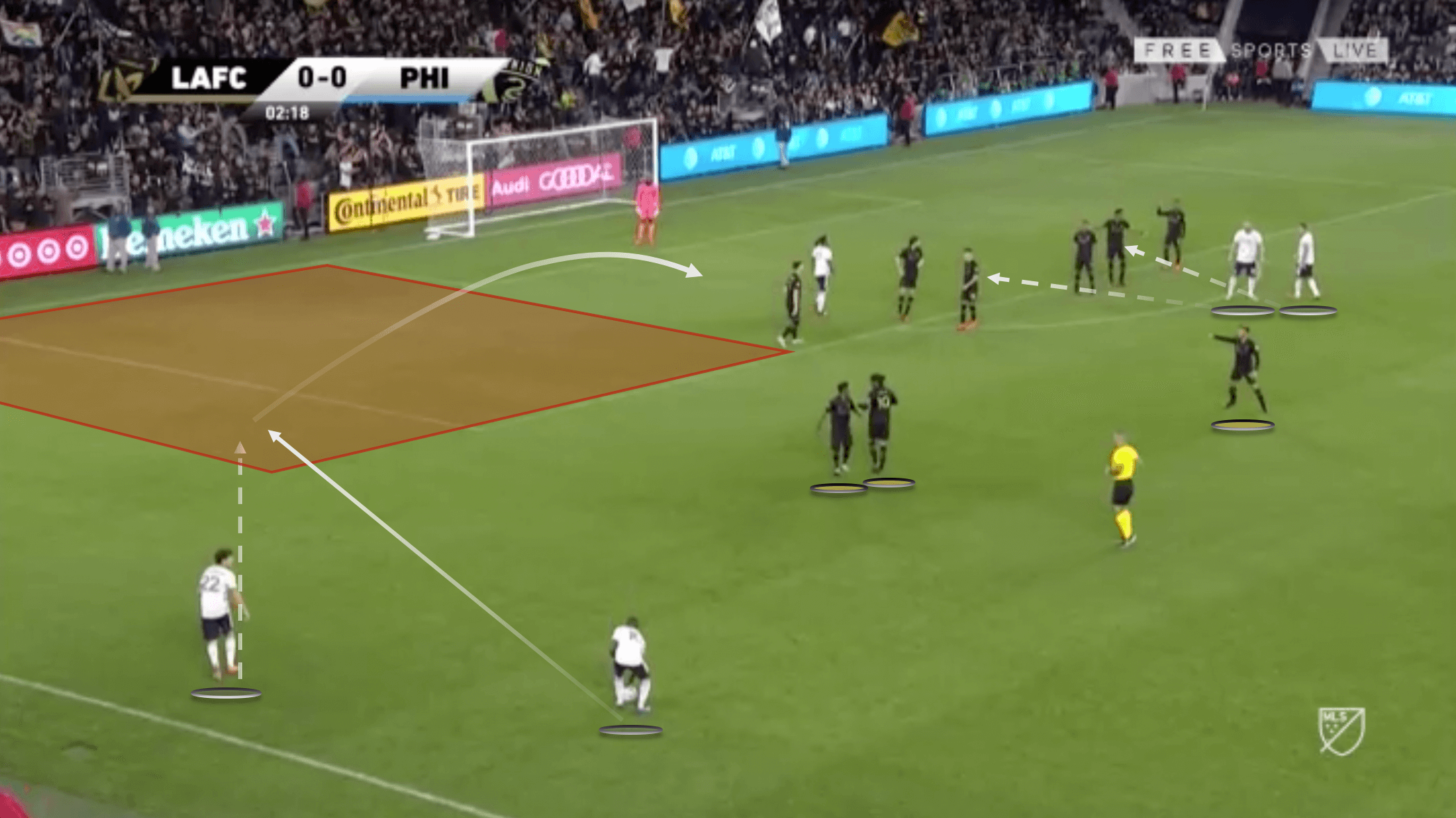
In transition, a consistent problem that Union presented was how to deal with playing against a front two. Most centre-back pairings in the modern game have become accustomed to playing 2v1 centrally as teams often play with a front three and wide players are often dealt with by the full-backs. Playing 2v2 in central areas certainly put LAFC centre-backs Eddie Segura and Dejan Jakovic into a position of unfamiliarity. Furthermore, Santos and Przybyłko had a willingness to spin into the channels which helped create separation between the centre-backs.
In the below image, Santos and Przybyłko started closer together before the ball was won. Upon transition, the pair split with movements that peeled off the outside shoulder of the two centre-backs, creating two 1v1 situations and a compromised defensive shape for LAFC.
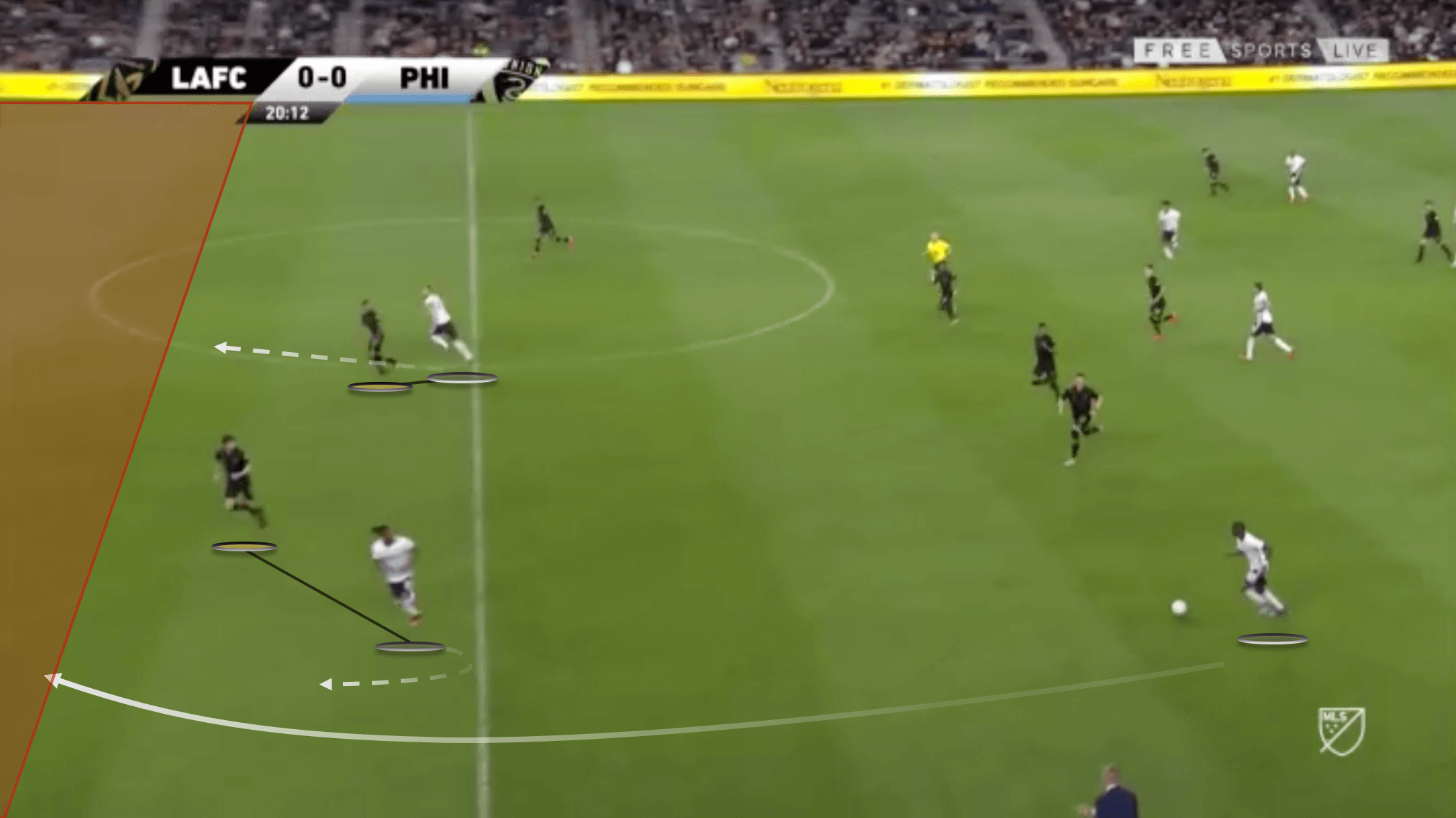
Again, Union’s direct attacking style poses problems for LAFC. The front two constantly looked to exploit space behind and players in possession of the ball were always looking to play forwards.
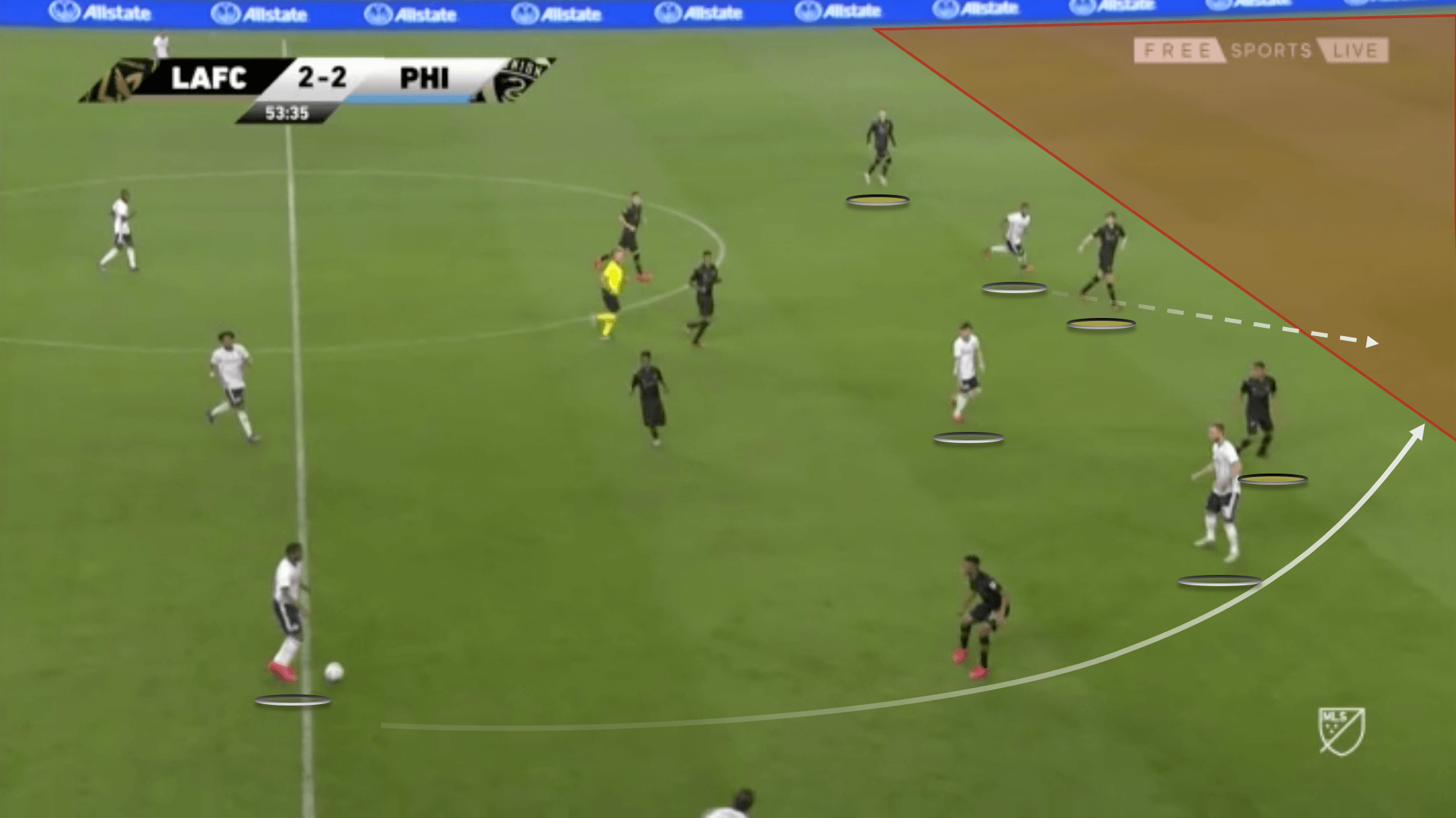
LAFC Exploiting the Flanks
As can be somewhat expected from Philadelphia Union’s narrow team shape, space for LAFC to exploit was naturally in wide areas of the pitch. The problem for them, as mentioned earlier in this tactical analysis, was to create enough time and space on the ball to be able to find players in wide areas.
The toughest challenge for LAFC in the game seemed to be in breaking the first two defensive units of Union when they were in an organized defensive shape. If they were successful in doing so, LAFC’s attacking threat of Carlos Vela, Diego Rossi and Brian Rodríguez was more than competent in creating chances to score goals.
The following image shows Segura switching the ball on a diagonal to Tristan Blackmon who played as a right-back for LAFC. With Blackmon and Diego Palacios playing as the full-backs, quick switches to them would allow LAFC to play around the narrow front and midfield units of the Union and attack the back four.
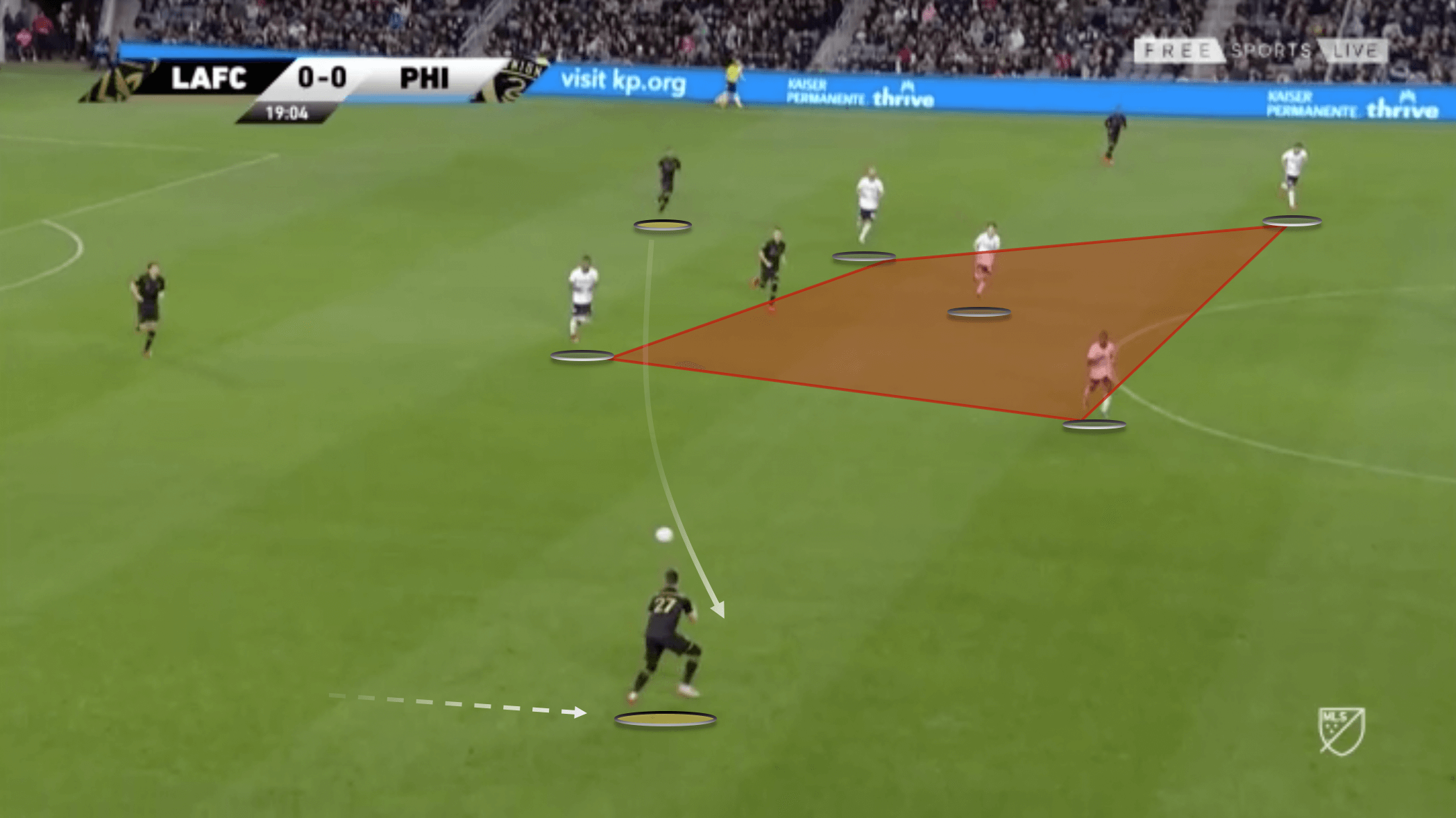
As LAFC figured out how to beat the block and attack the organized backline of Union, up steps Carlos Vela. With the Mexican being one of the leagues most dangerous players, Matthew Real had his work cut out. In short succession, Real was tasked with two almost identical situations, in which Vela was in full control of both.
The first situation is with Real staying tightly connected to his defensive unit. In this situation, LAFC play around the block and Vela is able to play 1v1 with Real before looking to move inside with the ball and shoot.
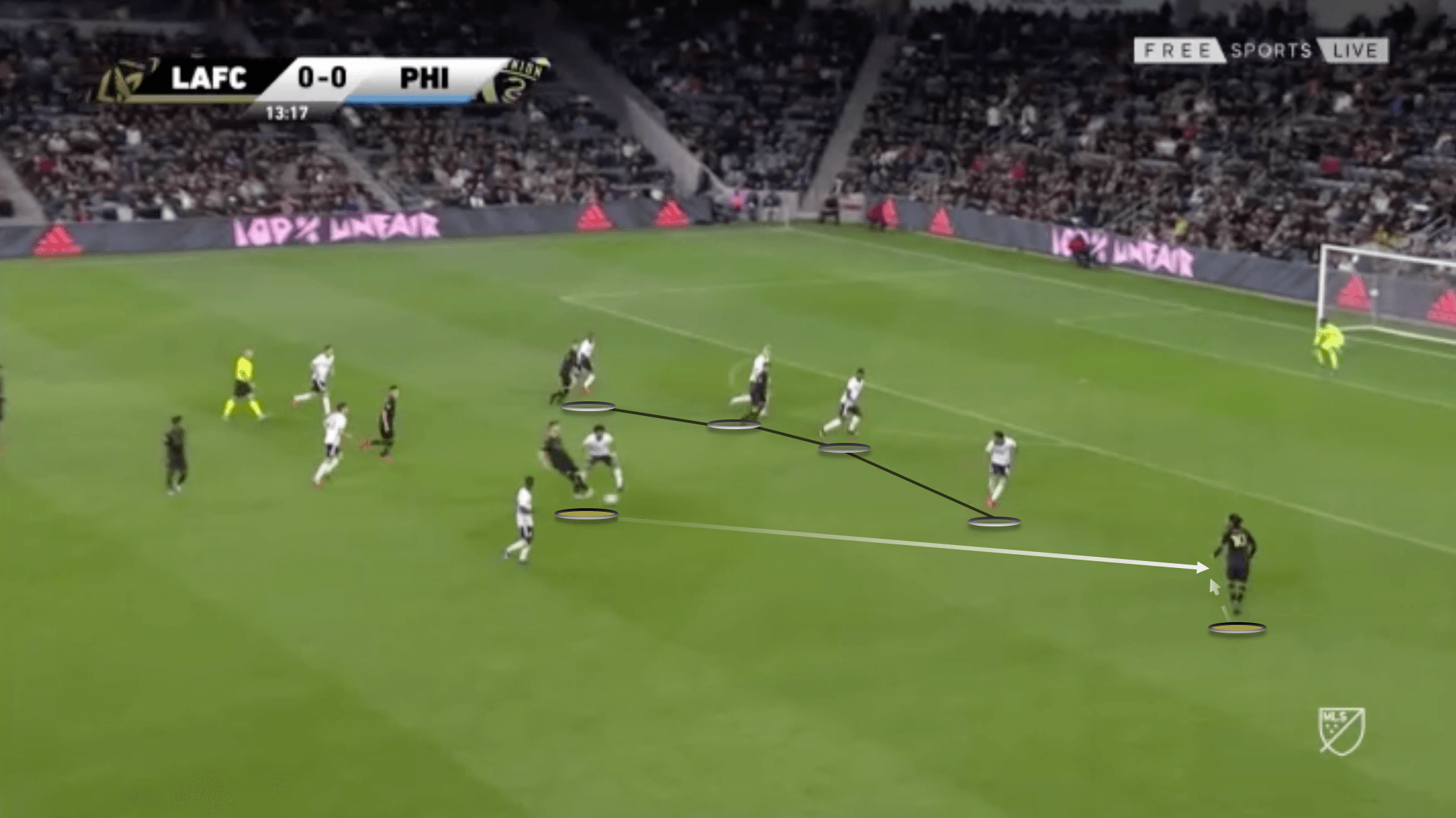
In this next image, taken only a few seconds later, Real anticipates the ball played into Vela around the block and moves too early to apply pressure. With tactical awareness from Vela and excellent vision and execution from Mark-Anthony Kaye, Vela is able to get on the inside shoulder of Real with a split pass getting him in behind.
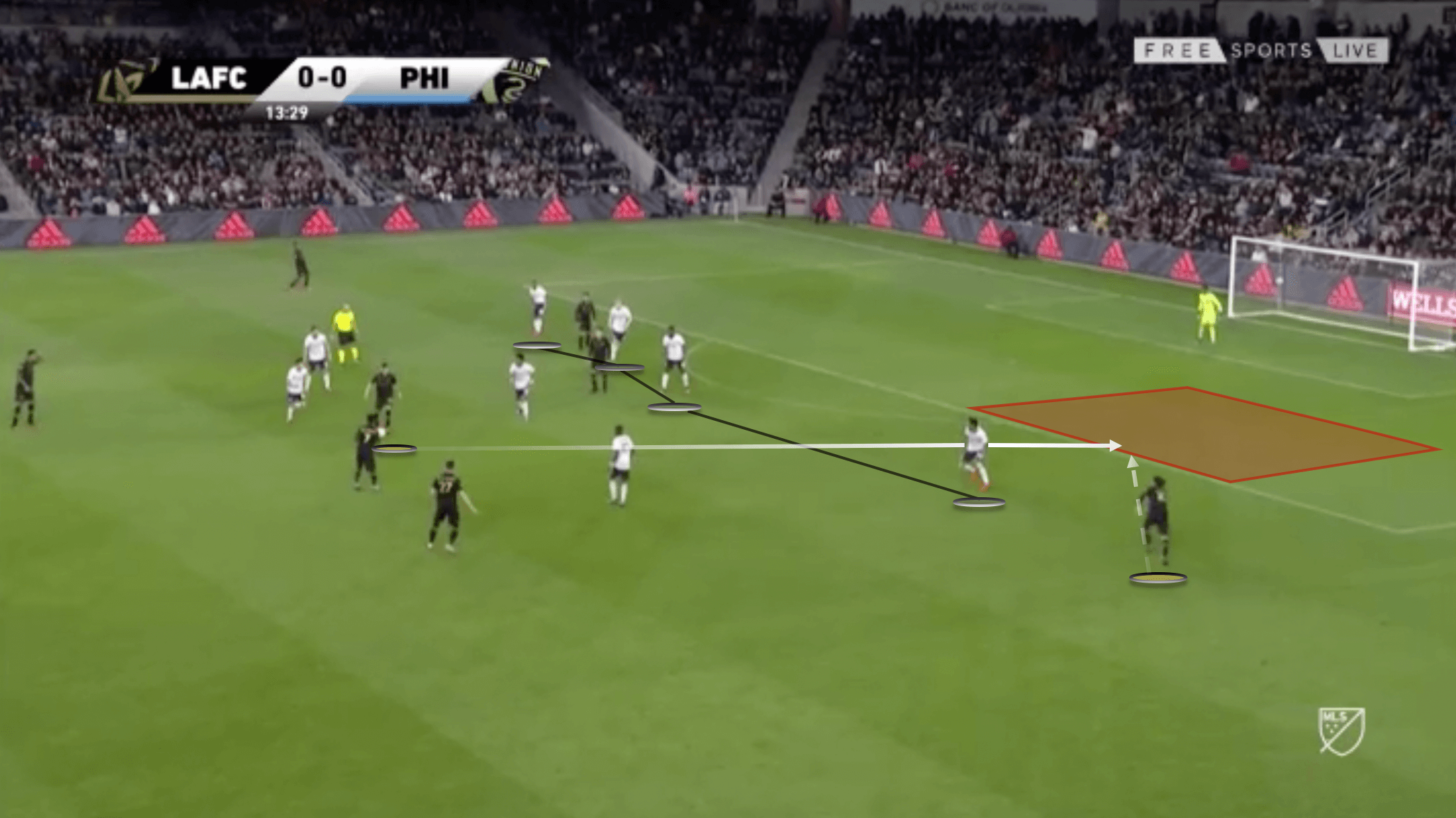
While the tactical situation did not always look as open as the previous two examples, LAFC did still work the ball well with quick combinations and creative movement when they entered the final third.
The next image shows Union working to get numbers around the ball and a regain of defensive organization. The craftiness and quick combination play between Vela, Atuesta and Latif Blessing still allows LAFC to unlock the door and create a chance to score.
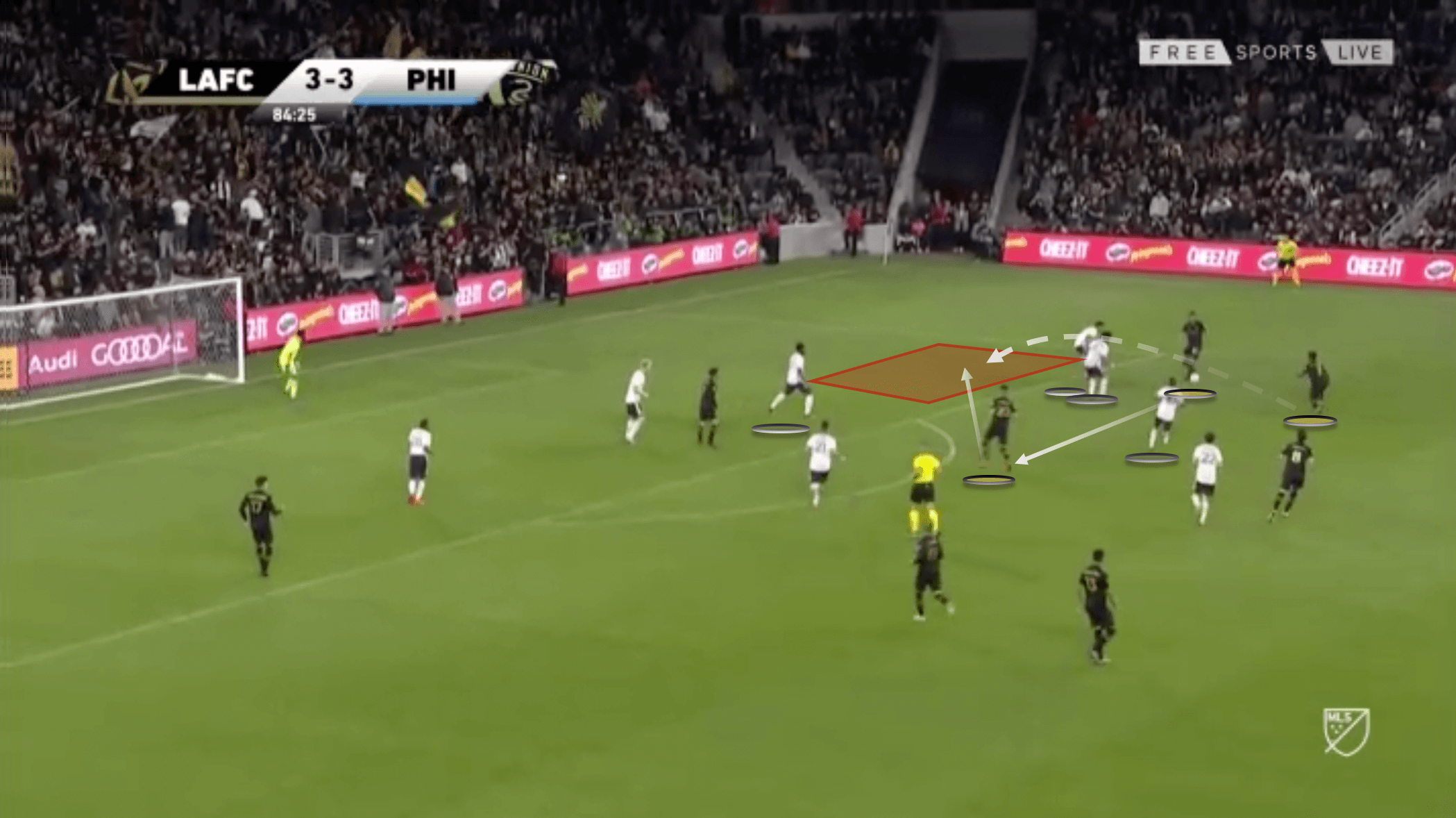
A constant game of Cat and Mouse
Overall, the game was absolutely fascinating to analyse as both teams stayed true to their principles and gameplan. Each team had clear ideas on how to play in all phases of the game. With Philadelphia Union being impressive in their ability to counter the counter, LAFC were impressive in their ability to tweak roles to impact the game.
The below image shows the tactics LAFC employed to exploit Union’s narrow formation. A tweak that LAFC made in the game was to have Carlos Vela position himself on the inside shoulder of the full-back (Real) in order to draw him in closer to the middle of the pitch. This helped create more space for Blackmon to attack.
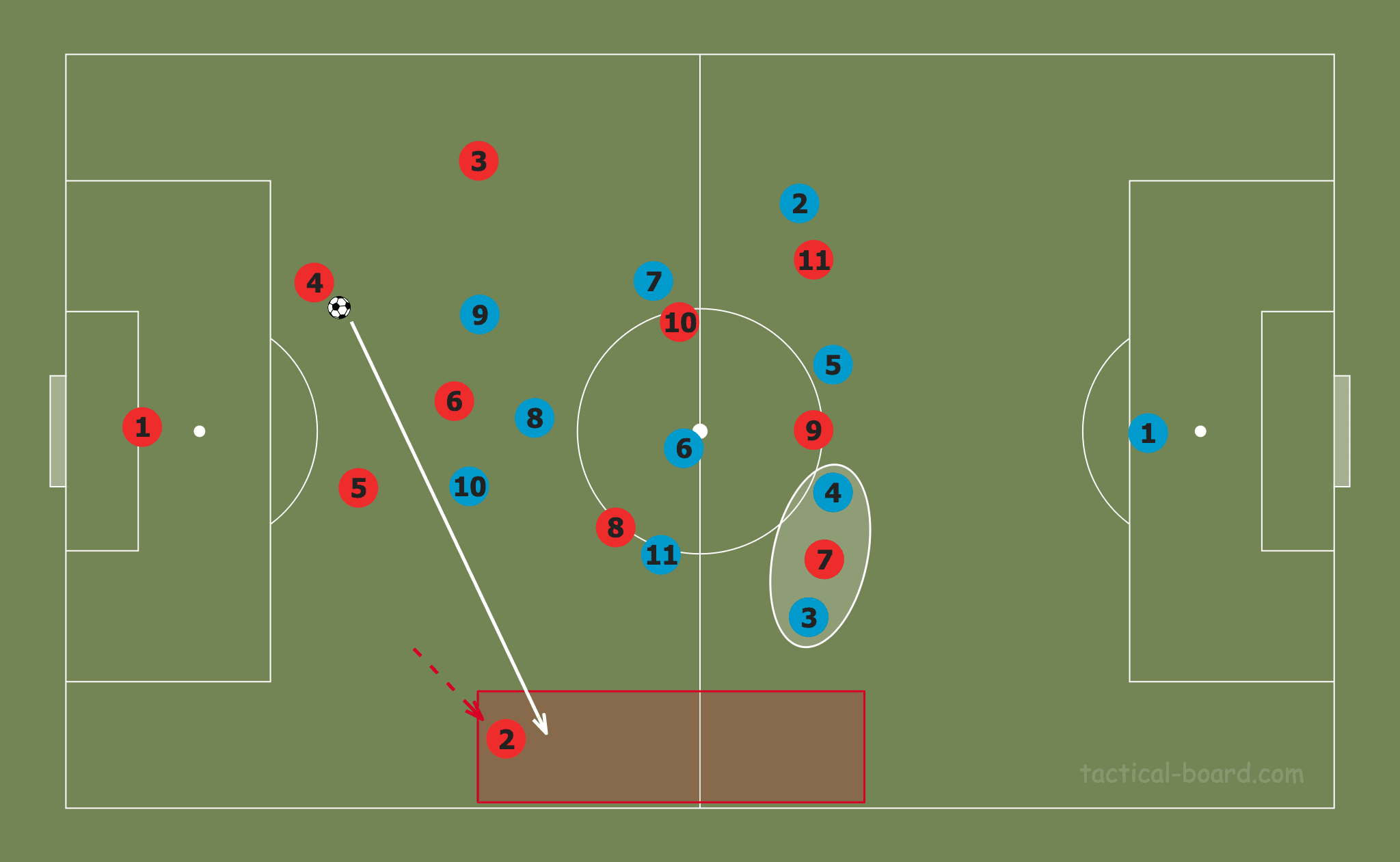
A question to be posed is whether Union were comfortable with the idea of allowing Blackmon to take the available space that Vela had helped to create. The higher up the pitch that Blackmon went, the more challenging it would be for him to get back into the game if a transition was to occur.
The image below shows space ahead in yellow for Blackmon to attack. The red space behind him becomes a question of his willingness to give up.
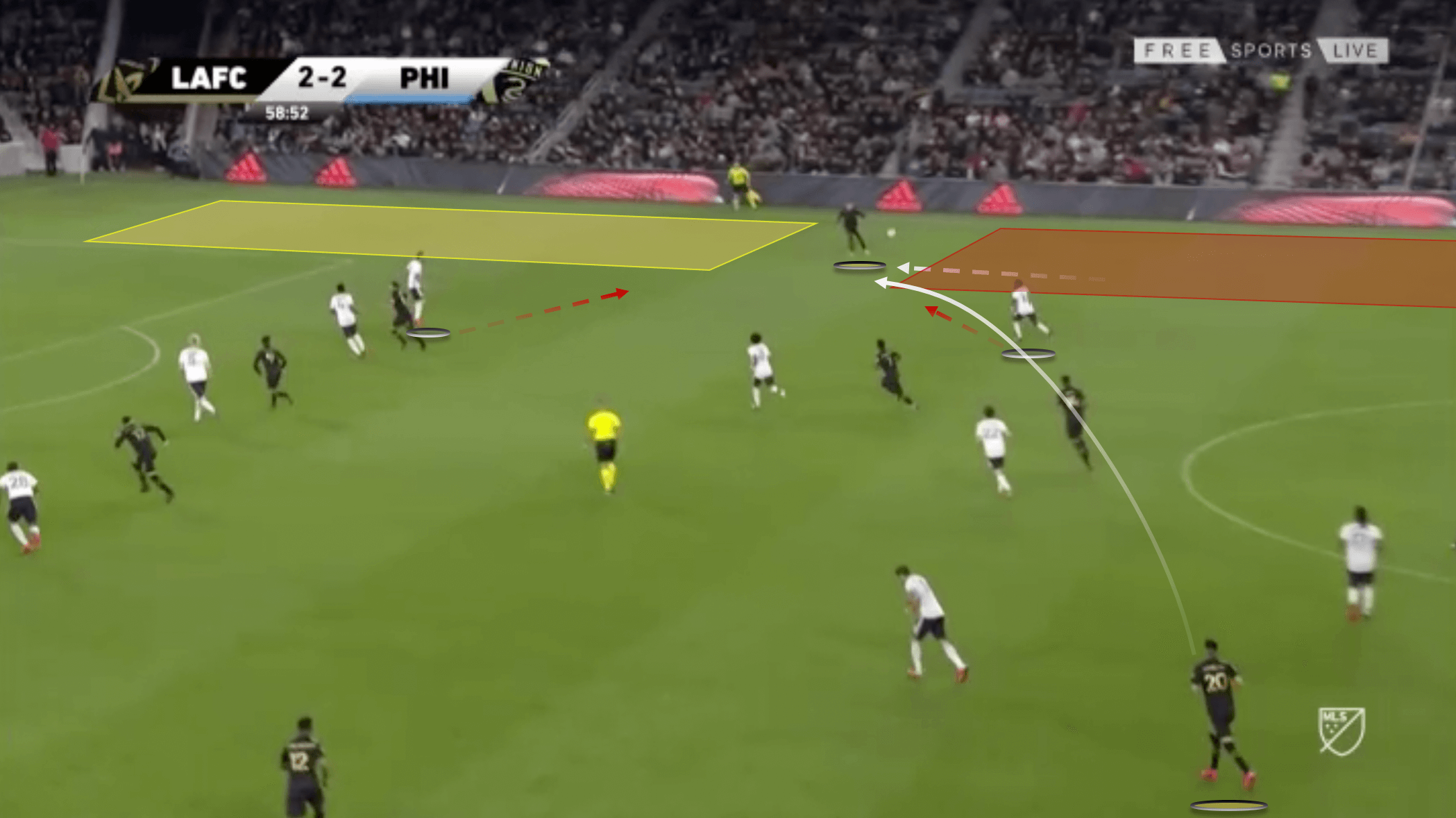
With Blackmon and Vela working to create 2v1 situations on the right side of the pitch for LAFC, Union looked to counter quickly in the channels, creating 1v1 or 2v2 situations.
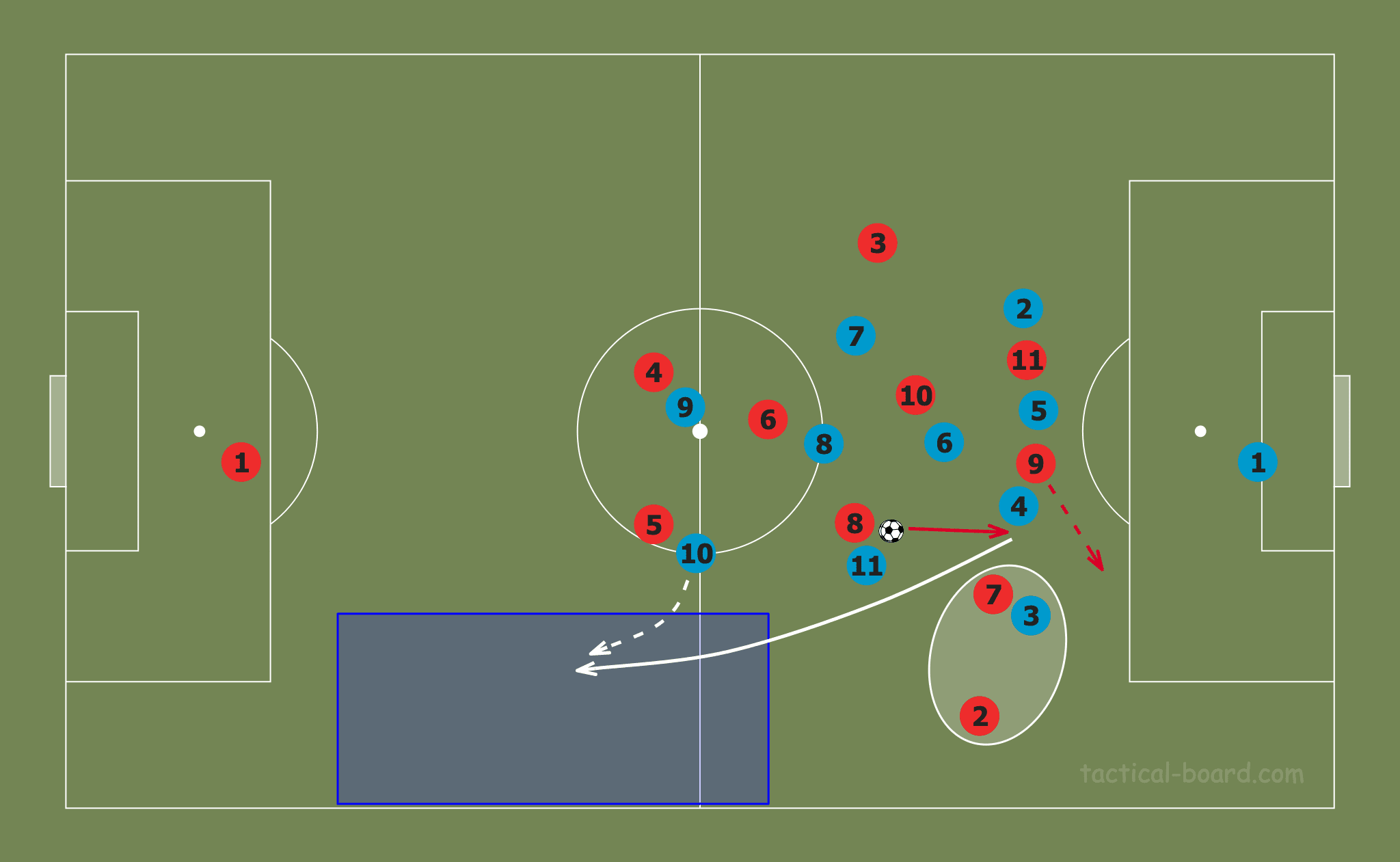
Conclusion
With plenty of expectation of a great MLS matchup, this fixture most certainly did not disappoint with six goals overall and a potential goal of the season contender. With the constant back and forth nature, this match may already be considered as one of the best the MLS will see this season.
The noteworthy aspects of this match analysis lie in how each coach organized their teams and the in-match tweaks that were made to influence the outcome of the game. With their narrow shape and stubbornness to be broken, Philadelphia Union will be delighted to take a point home against one of MLS’s toughest teams.
Through a combination of individual qualities and system, it looks already as if both teams will be tough to beat this season.





Comments